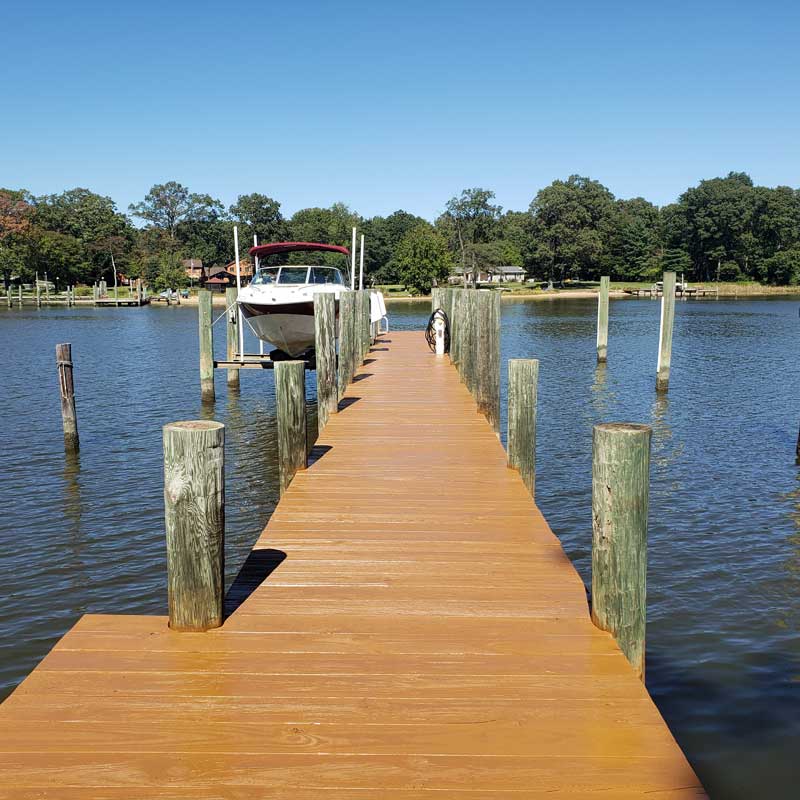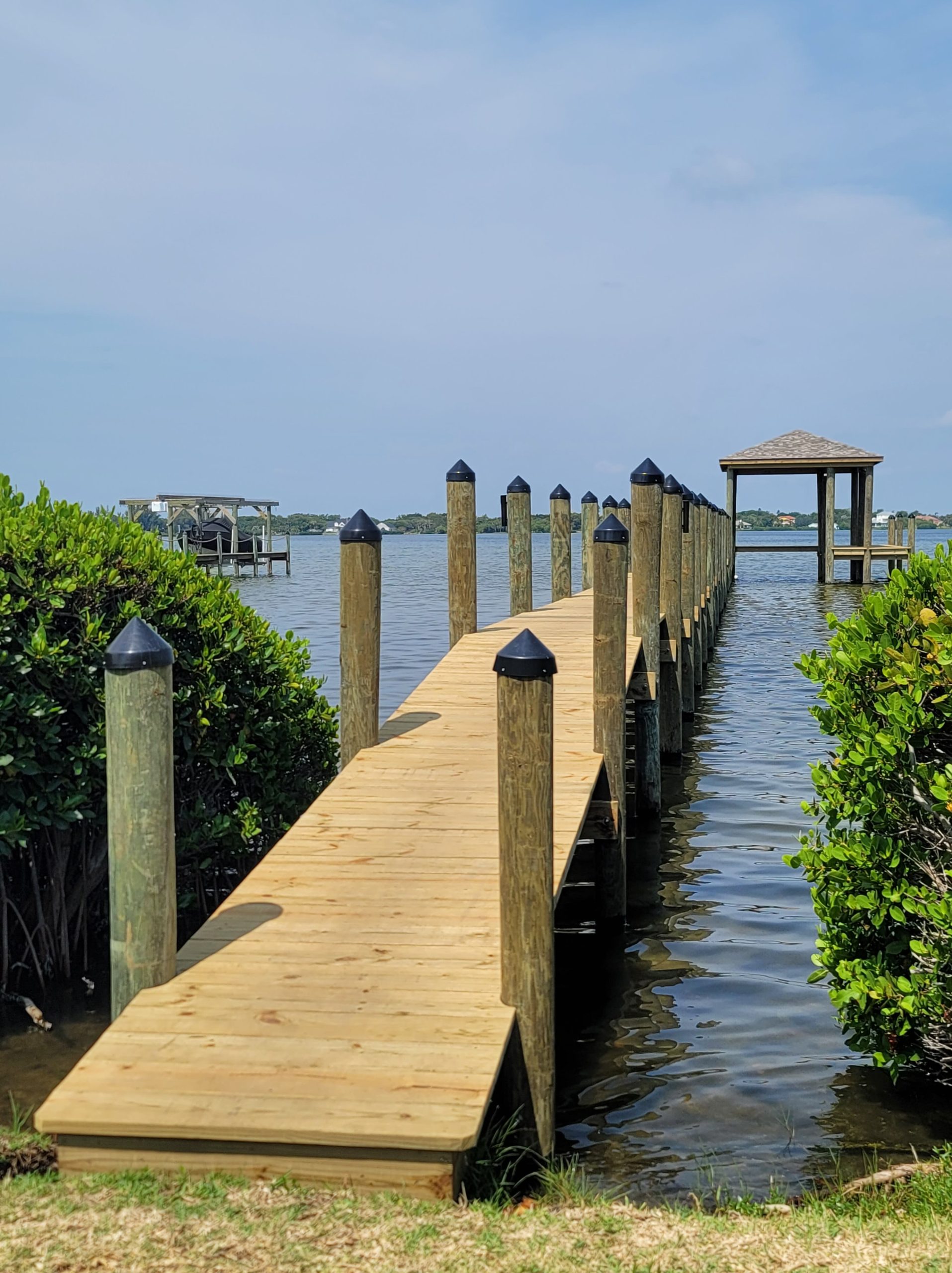Seasonal Preparations: When to Arrange Your Dock Repairs
Seasonal Preparations: When to Arrange Your Dock Repairs
Blog Article
Effective Dock Repair Techniques: Making Certain Architectural Stability
Guaranteeing the architectural stability of docks via reliable fixing techniques is critical for the durability and security of marine centers. This involves a multi-faceted strategy starting with detailed evaluations using innovative technologies like sonar equipment and from another location ran vehicles (ROVs) to spot both visible and concealed damages. Ultimately, choosing the right fixing materials, such as composite materials and corrosion-resistant alloys, is vital for sturdiness. Architectural reinforcement techniques, consisting of the application of cross-bracing systems and load-distribution plates, play an essential function in mitigating stress and anxiety factors. The value of these strategies ends up being noticeable when discovering sophisticated repair work methods and preventative upkeep methods.
Examining Dock Damage
Analyzing dock damage is a critical very first action in guaranteeing the architectural honesty and safety and security of any docking center. Key elements to take a look at consist of the dock's foundation, pilings, outdoor decking, and hardware (Dock Repairs).
Architectural engineers or certified inspectors usually execute these assessments making use of specialized tools and strategies. Underwater assessments may use finder equipment or from another location ran cars (ROVs) to detect immersed damage. Over water, aesthetic examinations are complemented by utilizing moisture meters and various other analysis tools to reveal underlying issues not immediately visible to the nude eye.

Finding Repair Materials
Selecting the proper fixing materials is a pivotal step in the dock reconstruction procedure, one that directly affects the long life and efficiency of the fixed framework. Material selection need to be driven by factors such as environmental problems, load-bearing requirements, and compatibility with existing dock elements. For example, wood is a standard selection for docks due to its natural resilience and aesthetic allure. Nonetheless, choosing the best kind of timber, such as pressure-treated lumber or normally rot-resistant varieties like cedar or teak, is critical to stand up to water environments.
In addition to timber, composite materials are increasingly preferred due to their sturdiness and reduced upkeep demands. Compounds, generally made from a blend of plastic and timber fibers, use superb resistance to rot, insects, and UV damage. For metal docks, selecting corrosion-resistant alloys such as galvanized steel or marine-grade light weight aluminum is necessary to prevent corrosion and ensure structural stability in saline water conditions.
Epoxy materials and marine-grade sealants are essential for repairing cracks and sealing joints, providing a water resistant barrier and improving the dock's overall strength. By thoroughly selecting premium materials, dock fixings can attain long-lasting outcomes, therefore safeguarding versus future deterioration and ensuring risk-free, trusted use.
Structural Reinforcement Techniques
Efficient architectural reinforcement methods are crucial in making sure the stability and durability of dock repair services. This approach is particularly effective for anchors revealed to heavy loads or extreme ecological problems.
Another important strategy is the application of fiber-reinforced polymers (FRP) These materials use high strength-to-weight proportions and exceptional resistance to deterioration, making them optimal for strengthening concrete or wooden anchors. FRP can be used in useful source strips or sheets and bound with epoxy materials to boost architectural integrity.
Bracing and anchoring systems additionally play an important role in structural support. Cross-bracing, making use of metal or wood beam of lights, can combat side forces, minimizing swaying and movement. Anchoring systems, such as helical piers or driven stacks, give a secure structure by moving lots to deeper, a lot more steady soil layers.
Last but not least, the integration of load-distribution plates can help distribute weight much more evenly throughout the dock's surface, mitigating local tension points. These methods collectively ensure that docks remain durable and safe, with the ability of holding up against the rigors of their functional atmosphere.
Advanced Repair Service Approaches

Another advanced method includes undersea welding, which enables repair services to be carried out without the requirement to dewater the location. This technique is particularly advantageous for dealing with architectural problems in immersed dock elements, guaranteeing marginal disturbance to operations. Improved welding strategies, combined with robot systems, deliver accuracy and reliability, thus prolonging the life expectancy of the dock.
Additionally, cathodic protection systems are executed to stop rust in metallic dock frameworks. By utilizing sacrificial anodes or amazed existing systems, these methods efficiently minimize the electrochemical procedures that result in material degeneration.
Last but not least, advanced tracking innovations, such as architectural health tracking (SHM) systems, offer real-time official source information on the condition of dock frameworks. These systems make it possible for proactive maintenance and prompt treatments, ultimately ensuring the lasting architectural integrity of the dock.
Upkeep and Prevention
Maintenance and avoidance are essential ideas that underpin the long life and security of dock structures. Routine assessments are paramount, enabling very early detection of wear and tear, possible weaknesses, and ecological impacts. A proactive method, involving regular checks for corrosion, rot, and architectural shifts, minimizes expensive fixings and extends the dock's operational life.
Safety nets need to include using safety finishes to steel parts to defend against rust and using treated timber to withstand degeneration. Additionally, ensuring correct drain and air flow can stop water accumulation, which is a common reason of structural deterioration. Integrating quality products and sticking to supplier standards during building and fixing stages also play critical duties in improving longevity.

Educating personnel in dock upkeep finest practices makes sure constant application of precautionary measures. Leveraging technological breakthroughs, such as drones for assessments and sensing units for real-time surveillance, can additionally enhance maintenance efforts. By focusing on maintenance and prevention, dock owners can ensure architectural stability, operational security, and economical management over the dock's life-span.
Final Thought
In conclusion, preserving the architectural honesty of aquatic centers demands extensive dock fixing methods. Comprehensive assessments making use of innovative devices reveal both noticeable and hid damages, while the option of ideal repair work materials enhances longevity. Executing structural support approaches addresses anxiety points efficiently. Advanced repair strategies, paired with normal maintenance practices, guarantee the dock remains functional and secure under varied environmental problems. Embracing these techniques dramatically lengthens the life-span and functionality of marine framework.
Making certain the structural integrity of docks through effective repair service strategies is critical for the longevity and safety of marine facilities.Picking the appropriate fixing materials is a critical step in the dock restoration process, one that directly affects the durability and efficiency of the repaired framework.Effective structural reinforcement strategies are critical in ensuring the security and long life of dock repairs. By prioritizing upkeep and prevention, dock owners can guarantee architectural integrity, operational safety and security, and cost-efficient management over the dock's life-span.
In conclusion, preserving the architectural integrity of aquatic centers necessitates comprehensive dock repair methods.
Report this page